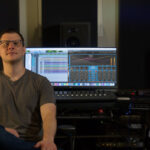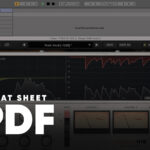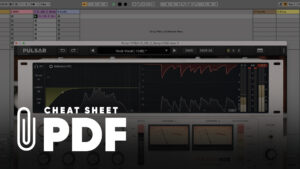The History of Spring Reverb
- Posted on

Learn about the technologies, artists and sounds involved with spring reverb over eight decades of the popular spatial effects.
Spring reverb made its debut in Laurens Hammond’s 1930 organs, initially designed for studio and home use. The organs contained large mechanical reverb tanks, providing players with a spatial effect that aimed to replicate the natural reverberation of a church or cathedral, right in their living rooms. However, it wasn’t until two decades later that advancements led to the development of smaller tanks, suitable for portable units and guitar amplifiers.
The Japanese market played a pivotal role in driving efforts to streamline costs and enhance accessibility to this artificial reverb effect, particularly in their low-cost, commercial products. By the 1970s, record producers were delving into experimental realms, fully embracing the quirks of spring reverb and leveraging its gritty, synthetic sounds to pioneer tonal and sound design innovation.
The sound of a spring reverb isn’t a faithful and realistic recreation of a room sound by any means, rather a characterful and sometimes dirty sound that has become an iconic and sought after tone that isn’t only limited to guitars. The effect’s ability to add warmth, presence, and a sense of space to audio signals makes it a powerful tool that can be used creatively on other elements in the mix, such as individual drum hits.
To celebrate the release of Primavera, we’re bouncing down memory lane with a look at the landmarks in the spring reverb’s development.
Origin of the Mechanical Reverb
The earliest mechanical reverb units were developed by Bell Labs for Laurens Hammond’s 1930’s home organs, initially designed to replicate the delays observed in long-distance telephone cables. These contraptions featured springs submerged in tubes filled with oil, effectively dampening vibrations. Varying amounts of oil dictated the duration of spring vibrations, controlling the decay of reverb.
In contrast to natural reverb, the spring effect operates in a controlled domain, providing possible physical design changes to shape the sound. Instead of relying on the characteristics of a natural space, it generates reverb-like sounds mechanically by physically manipulating metal springs.
At one end of the springs, a transducer converts electrical signals into physical energy, driven by the dry audio signal. Each transient in the dry signal triggers vibrations to travel back and forth along the springs. Positioned at the opposite end, a pickup captures the resulting dark, spongy, and dynamic sound generated by the reverb tank. The mechanical spring effect offers a unique approach to achieving reverb, distinct from traditional acoustic reverberations.

The Sounds of Spring
Spring reverbs can be broadly categorized into two camps: those that passively blend the spring output with the dry signal, and powered spring units that employ a make-up amp or buffer circuit to boost the signal. Additionally, spring units can be further classified based on the number of springs in the tank. Dual spring units typically evoke a vintage and fluttery character, while triple spring units produce a rich, clean sound and retain more low-end information from the dry signal.
Great British Spring
Manufactured by UK-based Bandive, The first Great British Spring (GBS) models were passive and sent dry signals to the spring using a transducer. The GBS used two sets of triple spring units, stretched end to end of a four foot plastic pipe. While it is large compared to other spring units, its sound and 2-3 second decay time has a clarity that doesn’t color the tone of the input signal. This sound is ideal for vocals and other mix focal points, with its reverb effect that maintains the dry signal’s clarity without too much tonal coloring.
The GBS units have to be mounted vertically, often to a wall, to maintain the optimum spring tension and to prevent the power sources and other variables to induce hum. The GBS creates some of the cleanest and most open-sounding mechanical reverbs while still offering a dense spring effect.
A Certain Twang
In the early years of spring reverb, Hammond engineers refined the size and weight of the tanks, culminating in the creation of the Hammond Type 4. This dual spring unit, housed within a 16-inch metal case, represented a significant advancement in spring reverb technology. Hammond subsequently licensed the unit to Fender, who incorporated it into their tube-driven 1961 6G15 Fender Reverb unit. Paired with the tolex-era Fender amps, the Fender spring tank became synonymous with the iconic sound of 1960s Surf music.
From Living Room Ambience to Recording Greatness
In the late 60s, Japanese companies such as Hawk and Pioneer began to integrate spring reverb technology in domestic hi-fi systems to add ambience to home audio setups. These spring units have components that are designed to accept home-stereo level signals rather than pro audio uses. However, as mix engineers and producers heard the potential in the short decaying, dark and flutter echo, the sound began its journey into professional studio use. Engineers such as Tom Elmhirst have famously used the spring sound in mixes for David Bowie, Adele and Amy Winehouse.
The Hawk HR12 is an active dual spring reverb unit known for its unique design incorporating a Bucket-brigade-device (BBD) chip. This chip compensates for the inherent limitations of the spring, enhancing its quality by introducing pre-delay to separate the dry signal from the wet signal, thus improving the clarity of the effect. The HR12’s sonic signature is defined by its distinctive short, bouncing reflections similar to water droplets.
When subjected to high input levels, the HR12 generates a natural distortion highly sought after in studio applications. It’s worth noting that HR12 units are often modified to include features such as a mix or full wet switch. This switch enables users to adjust the intensity of the effect or bypass the dry signal entirely, providing greater flexibility in shaping the reverb’s contribution to the overall sound.

In the 1970s, Pioneer introduced the SR-202, a solid-state hi-fi system incorporating a spring reverb unit. This device is characterized by its unique sonic qualities, notably a thin sound profile accompanied by distinct rattles and bangs. Despite its quirks, the SR-202 offers a dark, atmospheric sound enriched with a natural vibey flutter that imparts a sense of physical movement and realism to audio sources.
One notable feature of the SR-202 is its solid-state signal chain, which subtly colors the audio signal before it enters the reverb tank. This gentle coloring process contributes to the overall character of the reverb effect, digitally degrading the dry signal in a manner that adds intentional coloration to the audio sources.
Although the SR-202 units are notorious for their noise and thin sound, these characteristics are embraced by users for their lofi quality. The intentional coloration introduced by the device adds character to audio sources, making the SR-202 a sought-after tool for creative sound design.
One Small Spring for Man

What sets the early Space Echo units apart is the character of their preamp board. This preamp provides the dry signal with a warm tone before it reaches the reverb tank, adding a pleasing coloration to the sound. As the preamp tubes in these units begin to saturate and break up, they introduce a gritty crunchiness to the signal. Due to these unique sonic qualities, the Roland Space Echo RE-201 is highly sought after for live and studio uses alike. Its ability to add warmth, character, and texture to audio signals has cemented its status as a benchmark sound in the world of recording and audio production.
Aquatic Dub Throws
In the 1970s, Kingston, Jamaica birthed a groundbreaking music genre. Dub emerged from the roots of reggae, merging with the era’s cutting-edge technology to create a sound system-filling revolution. Defined by its deep sub bass and gritty time-based effects, dub utilized delay, reverb, analog filtering, and modulation effects like phasers and flangers to artfully layer aquatic and synthetic textures. Pioneering artists such as King Tubby, Lee “Scratch” Perry, and Tapper Zukie would drench brass, piano stabs, guitars, and percussion in these effects, resulting in psychedelic, dimensional soundscapes.
With Pulsar Primavera, you get every one of these supreme spring specimens within the same plugin. Featuring detailed control of your springs’ Tension and Excitation, plus extras like Drive, Ducking and Width, it’s the legendary twist you need to have in your plugins folder.





